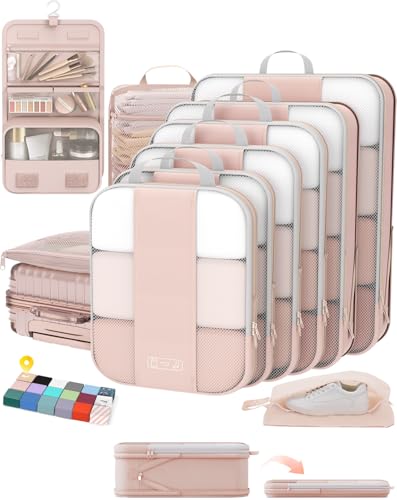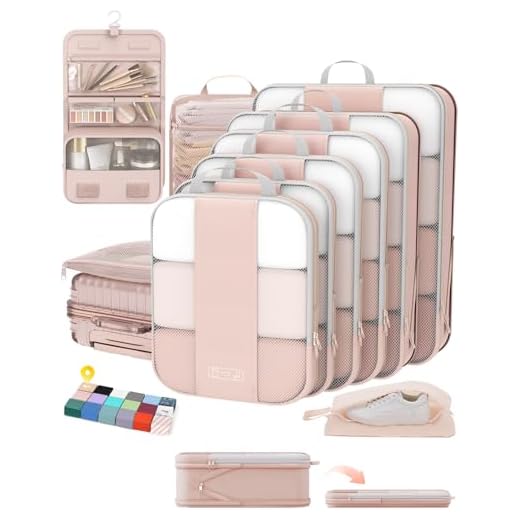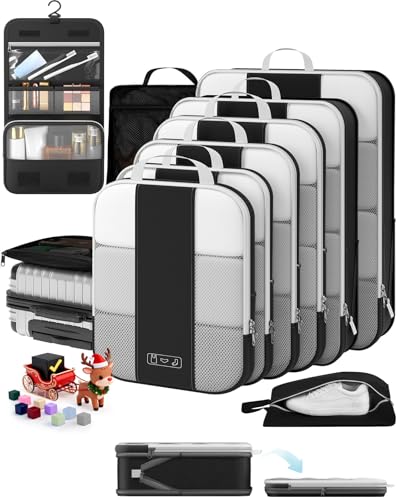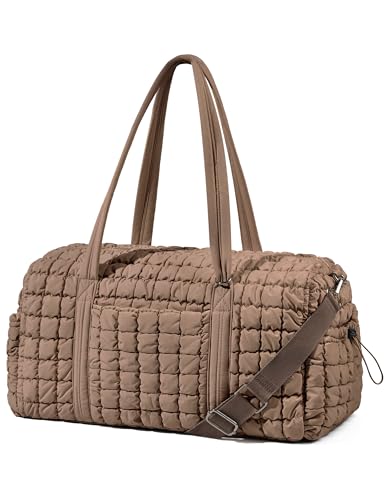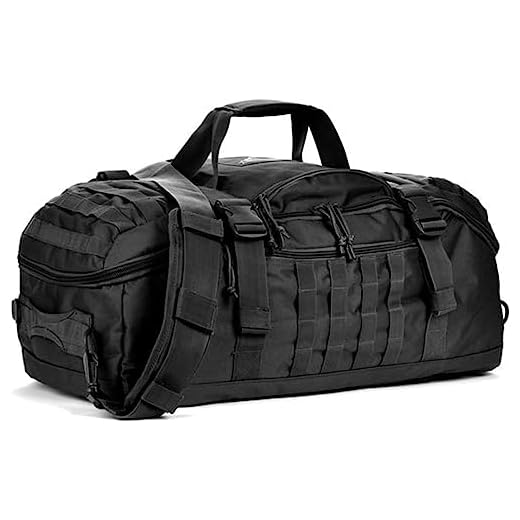
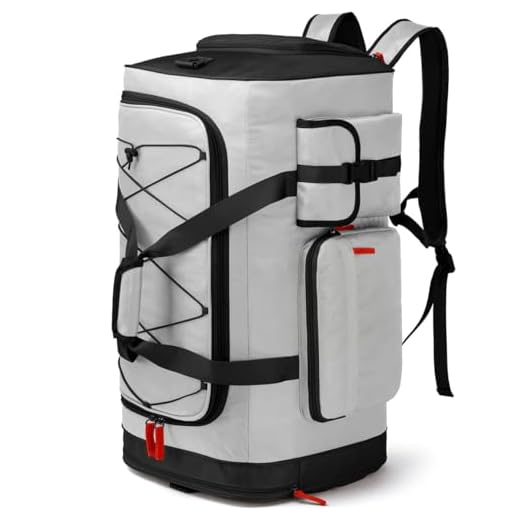

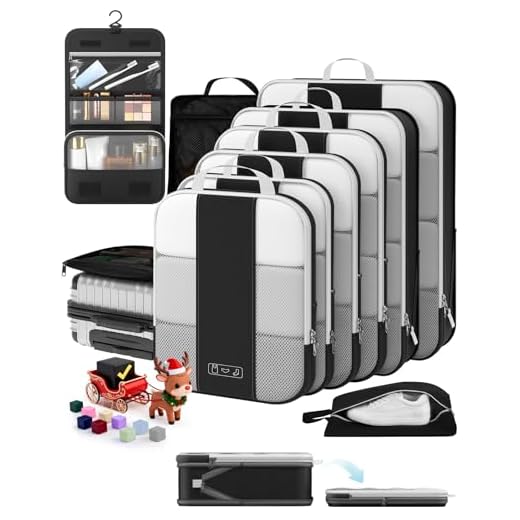
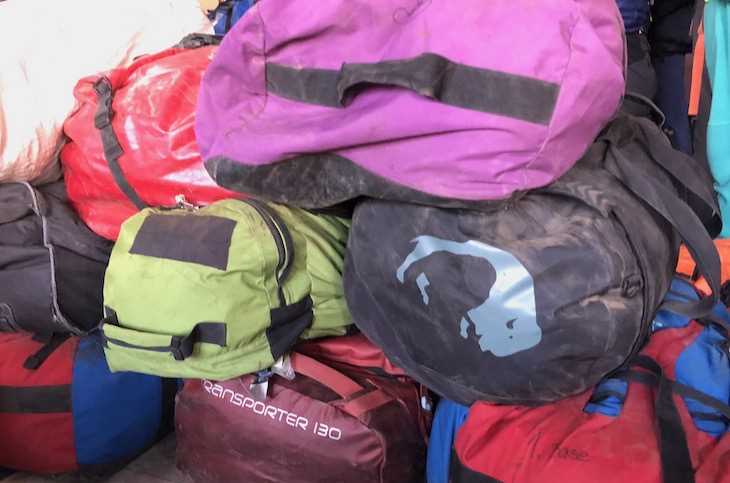
Roll your clothes instead of folding them. This simple technique maximizes space and reduces wrinkles, making it easier to fit everything you need in your holdall. In this article, I’ll share practical strategies for organizing your items, ensuring you can pack efficiently for any trip.
This guide is designed for anyone preparing for a getaway, whether it’s a weekend escape or an extended adventure. You’ll find actionable advice on how to choose the right holdall, essential packing methods, and clever hacks to keep your belongings secure and accessible.
Throughout the article, I will cover topics such as utilizing packing cubes for organization, selecting versatile clothing, and the importance of prioritizing lightweight items. By the end, you will have a clear understanding of how to optimize your holdall for a seamless travel experience.
Optimal Methods for Organizing a Travel Duffel
Begin with selecting the right items based on your itinerary. Prioritize clothing that is versatile and can be mixed and matched. Roll garments instead of folding them to save space and reduce wrinkles.
Utilize packing cubes or compression bags to categorize your belongings. This not only maximizes space but also simplifies access to specific items. Keep frequently used items, such as toiletries and chargers, at the top or in an easily accessible compartment.
Strategic Arrangement Techniques
Place heavier items, like shoes and toiletries, at the bottom of the bag. This provides stability and prevents lighter items from getting crushed. Fill gaps with smaller items, such as socks or accessories, to make the most of every inch.
- Wear bulky clothing during travel to save space.
- Choose lightweight fabrics that dry quickly.
- Consider packing a reusable shopping bag for souvenirs or laundry.
For liquids, ensure all are packed in a sealed plastic bag to prevent leaks. Check regulations for carry-on items if flying. Organizing your bag methodically can make all the difference in a smooth travel experience.
Selecting the Right Duffel Bag Size for Your Trip
Choosing the appropriate size for your carryall is fundamental to ensuring a comfortable and organized experience. A well-sized container not only accommodates your belongings but also allows for easy transport and access during your excursions.
Assess the duration of your stay and the activities planned. A weekend getaway typically requires a smaller model, around 30-50 liters, while longer trips may necessitate a larger option, ranging from 50-100 liters or more. Consider the following factors:
Factors Influencing Size Selection
- Length of Trip: Short trips need less space, while extended stays require additional capacity.
- Type of Activities: If engaging in outdoor sports or similar activities, account for extra gear that may require additional room.
- Clothing Needs: Different climates may necessitate heavier or bulkier clothing, influencing the size you need.
Using a checklist can aid in determining the necessary dimensions. Create a list of items you plan to take, categorizing them by type. This can help visualize how much space each category will occupy.
- Clothing
- Toiletries
- Electronic devices
- Accessories
Finally, consider the bag’s design. Some options have expandable sections or compartments, which can provide flexibility for varying load sizes. Assessing these features can help maximize your carryall’s potential without compromising on comfort or style.
Essential Packing Techniques for Maximizing Space
Utilizing packing cubes can significantly enhance organization and space efficiency. These compartments allow for categorizing items, making it easier to access what you need without rummaging through everything. By compressing clothing within these cubes, you not only save space but also keep your belongings wrinkle-free.
Rolling clothes instead of folding them is another strategy that can yield remarkable results. This method reduces the volume of each item, allowing for tighter packing. Additionally, consider placing smaller items like socks or underwear inside shoes to make the most of every available inch.
Additional Techniques for Efficient Packing
- Layering: Place heavier items at the bottom and lighter ones on top to maintain balance.
- Utilizing every nook: Fill gaps with belts, chargers, or other small items.
- Vacuum-seal bags: These can compress bulkier items like jackets or sweaters to save space.
Incorporating these methods will ensure your items are packed tightly and efficiently, making your next excursion more manageable and enjoyable.
Organizing Your Items with Packing Cubes and Bags
Utilizing packing cubes and bags significantly enhances the organization of your belongings. These containers serve to compartmentalize items, making it easy to locate essentials without rummaging through your entire collection. By categorizing clothing, toiletries, and accessories, you streamline the experience of accessing your items.
Investing in packing cubes allows for better space management. By compressing items, you can maximize the available area in your luggage. Consider using different sizes for various purposes; larger cubes for bulkier garments and smaller ones for accessories or undergarments. This method keeps everything tidy and minimizes wrinkles.
Benefits of Using Packing Cubes
- Easy Identification: Color-coded or labeled cubes help quickly identify contents.
- Efficient Use of Space: Compression features can reduce the volume of clothing.
- Separation of Items: Prevents mixing clean and dirty clothes, or toiletries with garments.
In addition to cubes, small bags for specific items, such as electronics or toiletries, further enhance organization. These bags can be easily accessed at security checks or during travel. Opt for waterproof materials for toiletries to avoid spills.
To maximize efficiency, consider a system where the most frequently used items are easily accessible. Place these at the top or in exterior pockets. A well-organized setup not only saves time but also reduces stress during your excursions.
Strategically Placing Heavier Items for Balance
For optimal balance in your carrying system, position heavier items close to the base. This placement helps maintain stability and reduces strain on your back and shoulders during transit. Consider items such as shoes, toiletries, or books as your primary candidates for this role.
Additionally, ensure that these heavier objects are evenly distributed from side to side. An unbalanced load can lead to discomfort and fatigue. A balanced arrangement allows for easier maneuvering and prevents unnecessary shifting during movement.
Techniques for Placement
When organizing your belongings, follow these specific techniques:
- Bottom Layer: Place bulky items like shoes or a toiletry kit at the bottom. This provides a solid foundation.
- Central Position: Position medium-weight items, such as clothes or electronics, higher up but still central to maintain equilibrium.
- Outer Edges: Use lighter items, like accessories or snacks, to fill the gaps and create a buffer around heavier contents.
By implementing these strategies, you can achieve a more comfortable and manageable load. This method not only enhances balance but also facilitates easier access to your essentials when needed.
Utilizing Every Pocket and Compartment Effectively
Maximize space by using every available pocket and compartment in your luggage. Begin with the exterior pockets; these are ideal for items you need quick access to, such as travel documents, snacks, or electronics. Keeping essentials at hand helps streamline your movements through security checks and during your travels.
Internally, compartmentalize your belongings by categorizing items. Use packing cubes or small pouches to group similar items together. This strategy not only organizes your contents but also facilitates faster retrieval when needed. Consider the size and shape of each pocket to optimize fitting your items snugly.
Strategies for Efficient Organization
- Small compartments: Perfect for toiletries, chargers, and other small accessories. Keep these items in waterproof bags to prevent spills from damaging clothing.
- Main compartment: Place heavier items at the bottom to maintain balance. Roll clothing to save space and minimize wrinkles.
- Side pockets: Use these for reusable water bottles or umbrellas, ensuring they are easily accessible during your transit.
By strategically utilizing each section, you not only conserve space but also enhance accessibility, which is crucial during trips. This thoughtful arrangement allows for a smoother experience, eliminating the frustration of rummaging through your belongings.
Tips for Rolling vs. Folding Clothes for Efficiency
Rolling clothes can save space and reduce wrinkles, making it a practical choice for many types of apparel. Use this method for casual wear like t-shirts, shorts, and lightweight fabrics. To roll effectively, lay the item flat, fold the sleeves inwards for a neat finish, and then tightly roll from the bottom to the top. This technique enables you to maximize space in your container while keeping your garments organized.
Folding is advantageous for structured items such as dress shirts, blazers, and trousers. This method helps maintain the shape and crispness of the clothing. To fold properly, smooth out any wrinkles, fold the garment in half vertically, then fold the sleeves inward. Finally, create a rectangle by folding the bottom up to the top. This method provides easy access to your clothes while minimizing damage to delicate fabrics.
Comparison of Techniques
| Method | Best For | Advantages | Disadvantages |
|---|---|---|---|
| Rolling | Casual wear | Space-saving, wrinkle reduction | Less structure for formal items |
| Folding | Structured clothing | Shape maintenance, easy access | More space required |
Experimenting with both methods can help you determine which suits your style and needs best. Combining rolling and folding by using rolling for casual items and folding for formal pieces can optimize space and organization. Adapting your approach based on the type of clothing will enhance your packing experience.
Last-Minute Packing Hacks for Quick Getaways
Utilize packing cubes to compartmentalize your items. This technique not only saves space but also allows for easy access to specific categories like clothing or toiletries without rummaging through your entire load.
Roll your garments instead of folding them. This method minimizes wrinkles and maximizes space, enabling you to fit more into your carryall. Additionally, you can use socks or smaller items to fill gaps, ensuring no space is wasted.
Additional Tips
- Check the Weather: Always verify the forecast for your destination to ensure you pack appropriately.
- Travel-Sized Containers: Use small bottles for liquids to comply with regulations and save room.
- Layer Your Outfits: Choose versatile pieces that can be mixed and matched for different looks.
- Limit Shoes: Bring only one or two pairs that cater to your activities.
These strategies streamline the preparation process, making last-minute departures less stressful and more organized.
Best way to pack a travel duffel bag
Features
| Model | PCC7V112 |
| Color | Beige |
| Size | 10 set |
Features
| Color | Black |
| Size | Large (85L) |
Features
| Part Number | Travel Duffle Bag for Men |
| Model | Travel Duffle Bag for Men |
| Color | Grey |
| Size | 24 Inch |
Features
| Part Number | VSB300 |
| Model | VSB300 |
| Color | Clear |
| Size | 6" x 10" and 8" x 12" and 11" x 16" |
Features
| Model | PCC7V101 |
| Color | Black |
| Size | 10 set |
Features
| Color | black |
Video:
FAQ:
What are some tips for maximizing space in a travel duffel bag?
To make the most of your travel duffel bag, consider rolling your clothing instead of folding it. This technique not only saves space but also helps to minimize wrinkles. Packing cubes can also be beneficial as they keep items organized and make it easier to find what you need without having to rummage through the entire bag. Additionally, utilize every pocket and compartment available in the duffel bag for smaller items like toiletries or chargers. Lastly, wear your bulkier items, such as jackets or boots, during travel to save space.
How can I prevent my clothes from wrinkling while packed in a duffel bag?
To reduce wrinkles in your clothes while using a duffel bag, rolling your garments instead of folding them is highly recommended. This method allows for tighter packing and less creasing. You can also place a piece of tissue paper or a dryer sheet between layers of clothing to help minimize wrinkles. Packing delicate items like dresses or blouses in a garment bag can provide extra protection. Lastly, once you arrive at your destination, hang your clothes up promptly to let gravity help smooth out any creases.
What items should I avoid packing in a duffel bag for travel?
When packing a duffel bag, it’s wise to avoid bringing overly bulky items that can take up excessive space, such as large towels or heavy shoes. Fragile items should also be left out or packed very carefully, as duffel bags do not offer the same protection as hard-sided luggage. Additionally, it’s best to avoid packing items with strong odors, like certain foods, as they can permeate your belongings. Lastly, be cautious with liquids; ensure they are securely packed to prevent leaks, and consider placing them in a separate waterproof bag.

